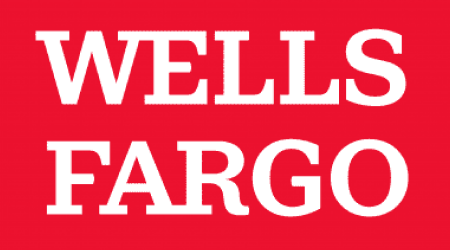SoFi vs. Chase: A quick comparison
 Chase |  Wells Fargo | |
| Bonus |
|
|
| Savings | Up to 0.02% APY with relationship rates | 0.01% to 2.01% APY, depending on balance, account, zip code and if you qualify for relationship rates |
| Checking |
|
|
| CDs | Terms from 1 to 120 months, relationship rates up to 4% APY |
|
| ATMs |
|
|
| Branches | Around 5,000 branches in 48 states | Around 7,000 branches in the states |
Chase vs. Wells Fargo: Account options
Chase and Wells Fargo are two of the biggest banks in the US, with Chase being number one in terms of asset size. And, of course, the banks are FDIC members, so deposit accounts are protected under deposit insurance up to $250,000.
Both banks offer a variety of deposit account options, including checking, savings, CDs and investment accounts. However, as Wells Fargo and Chase are so large, customer reviews aren’t usually the best, and neither bank has very competitive APYs on savings.
Banking
Like variety? You’re in the right place. Chase and Wells Fargo are both longstanding banks with multiple checking and savings accounts. Both offer traditional checking, kids banking, savings and certificates of deposit (CDs).
Chase offers:
- Checking. There are eight Chase checking accounts, but a few standouts include Chase Total Checking®, Chase Secure Banking and the “premium” account, Chase Sapphire Banking. There are also kids’ and teen accounts with no monthly fees. But unless you can waive Chase’s monthly service fees, plan on paying between $4.95 and $35 per month in service fees.
- Savings. There are two Chase savings accounts, but neither have impressive APYs. The Chase Savings account has a $5 waivable monthly fee and a low 0.01% APY that can vary slightly by zip code. The Chase Premier Savings account has a high $25 monthly fee (that can also be waived), but rates likely top out at 0.02% APY if you can get relationship rates.
- CDs. Offering much higher APYs than its savings accounts, Chase CDs are decent. Choose between one to 120 months for your term, and relationship rates can get as high as 4% APY. And like most big banks, there’s a $1,000 opening deposit requirement.
Wells Fargo offers:
- Checking. There are four checking accounts: Everyday Checking, Clear Access Banking for teens and students, and its two “premium” accounts, Prime Checking and Premier Checking. The Prime and Premier accounts are interest-bearing, but the APY is only 0.01%. But no matter which Wells Fargo checking account you go with, count on paying a monthly fee of around $5 to $35, but you might be able to waive those maintenance fees.
- Savings. Just like with Chase, don’t get too excited about Wells Fargo’s savings accounts because the APYs aren’t great. The Way2Save account offers just 0.01% APY. The Platinum Savings is slightly better, offering tiered APYs from 0.26% to 2.51% APY based on your balance, relationship status and zip code.
- CDs. Very similar to Chase, Wells Fargo forks over higher APYs for its CDs than its savings accounts. Wells Fargo offers CDs with relationship rates up to 2.01% APY, but you’ll need at least $2,500 to open a CD — a much larger opening deposit requirement than Chase.
Borrowing
Chase and Wells Fargo have various lending options.
Chase offers auto loans, top-tier credit cards, business financing and home financing options. But Chase doesn’t offer personal loans.
Wells Fargo offers personal loans, as well as auto financing through a dealership match-making network. It also has credit cards, home financing and business financing.
On the whole, we’d say that Chase’s credit cards are the ones to check out. There are many options without annual fees, high cashback rates and great travel perks. Additionally, Chase simply has more credit card options than Wells Fargo.
Investing
With either bank, you’ll find investing opportunities.
Wells Fargo provides a range of retirement planning and wealth management services. Along with offering IRAs, it features WellsTrade Brokerage accounts, full-service brokerage client support, retirement calculators and personalized consultations.
Chase is well-known for its investment banking and wealth management services. It offers Self-Directed Investing, IRAs, Personal Advisor services, commission-free online trades and the JPMorgan Wealth Plan.
Apps, features and more
Chase’s mobile app is full of features and highly rated by users. View your accounts and credit cards, manage rewards, send money with Zelle, chat with customer support and check out Chase shopping and travel deals. You can also track your wealth plan, access credit monitoring, review spending trends and apply for or open new accounts right in the app.
Wells Fargo’s app has much of the same functionality as Chase’s. However, its website can be tricky to navigate. Customer reviews often call the website outdated, but the app gets high marks. Use the app to transfer money, send cash to people with Zelle, pay bills and deposit checks. Wells Fargo also provides 24/7 customer support by phone and through its in-app virtual assistant, Fargo.
How Chase and Wells Fargo fees compare
Chase and Wells Fargo aren’t known for having fee-free bank accounts. They charge monthly fees on most of its deposit accounts, aside from their checking and savings options for children. However, both banks offer ways to waive monthly fees on the majority of their accounts.
The range of monthly fees on checking accounts is nearly identical: $4.95 to $35 for Chase and $5 to $35 for Wells Fargo. Both banks also charge $3 for out-of-network ATM withdrawals, and their ATM network sizes are similar, with Chase having around 15,000 ATMs and Wells Fargo having around 12,000.
If you’re after CDs, Chase has a much lower opening deposit requirement of $1,000 compared to Wells Fargo’s $2,500 requirement.
What customers say about Chase and Wells Fargo
Overall, you’ll find that both Chase and Wells Fargo don’t receive a lot of positive feedback, which is expected, as most people tend to leave bank reviews after a negative experience. But side by side, Chase does slightly better considering Wells Fargo’s recent scandals that impacted millions of its customers.
Chase holds an A+ rating on the Better Business Bureau (BBB), while Wells Fargo has an F rating. Wells Fargo has received a large volume of complaints due to recent scandals and regulation issues. The bank was required to pay $3.7 billion in penalties and damages for mishandling loans and bank accounts. Issues included wrongful overdraft fees, account freezes and improper vehicle repossessions, affecting millions of customers. And to no one’s surprise, the multiple scandals and issues resulted in a flood of negative opinions on Trustpilot and Reddit.
On the other hand, Chase does surprisingly well on Reddit. Users often mention that Chase is a decent bank as long as you can waive the account fees. Otherwise, you’ll get nickeled and dimed just for having the accounts open. And another common positive note is that Chase’s credit cards are great. On Trustpilot, customers often complain of fees, challenges contacting support, issues with account applications and sudden account closures, but these are typical complaints for large banks.
Final verdict: Chase is better
Chase is the slightly better option. It has a variety of rewards credit card options, more checking accounts, a lower opening deposit requirement on its CDs, renowned investing services and a better reputation.
Wells Fargo has slightly higher APYs on its CDs and savings accounts and offers personal loans, unlike Chase. But you’ll need a large deposit of at least $2,500 to open a CD. And while it offers a higher rate than Chase, the Wells Fargo Platinum Savings account costs $12 per month and rates are tiered based on your balance, relationship status and zip code.
But if you’re looking for high-yield savings accounts, we wouldn’t say that Chase or Wells Fargo are the banks to check out.
Chase at a glance
Chase’s checking accounts have fee waivers, there are options for kids and teens, its app is highly rated and there’s no shortage of great credit cards. But its savings APYs just aren’t competitive.
- Many deposit account options
- Decent APYs on CDs
- Investing services
- Highly-rated mobile app
- Large branch network
- Low savings account APYs
- Monthly fees on most accounts, though typically waivable
- No personal loans
Wells Fargo at a glance
Wells Fargo is a large national bank with a variety of services, but you’ll need to pay monthly fees and meet deposit requirements, and its customer reviews aren’t great.
- Variety of deposit accounts
- Higher savings APYs than Chase
- More lending options than Chase
- Large branch network
- Poor reputation
- Monthly fees on most accounts
- Large CD deposit requirements
Alternatives to Chase and Wells Fargo
Chase and Wells Fargo might be two of the biggest banks in the US (and the world), but they’re far from your only options. Compare the best online banks and check out these top alternatives:
- Raisin. Chase and Wells Fargo don’t have the best rates on savings products, so check out Raisin. It’s an online savings account marketplace offering exclusive rates on savings accounts that crush the competition.
- Varo. An online bank, Varo offers a no-monthly-fee checking and savings account. Earn cashback rewards on debit card purchases and up to 5% APY on savings by meeting balance requirements.
- PNC Bank. If you were considering Chase and Wells Fargo due to their branch networks, there’s also PNC. It’s a traditional brick-and-mortar bank with typical accounts, products and offerings, including its hybrid account called the Virtual Wallet.
See how even more bank accounts stack up:
Ask a question
More guides on Finder
-
Accounts with High FDIC Insurance Coverage
These accounts offer high FDIC insurance, making them ideal for those with a million dollars or more in one account.
-
Does Bank of America Have Zelle?
Learn how to use Zelle with your Bank of America account, including how to enroll, sending limits, fees and more.
-
Does Discover Have Zelle?
Zelle is a peer-to-peer payment app that lets you seamlessly send and receive money from people you know. Find out if Discover supports Zelle.
-
Does Chime® Have Zelle?
Chime is a fintech company and not a true bank, so it can’t integrate with Zelle. But you can connect your Chime account to the Zelle app.
-
What’s the Best Bank for Seniors?
Charlie, Chase and SoFi are some of the best free bank accounts for seniors and retirees, with competitive APYs and low deposit requirements.
-
Chime Account Bonuses
Chime offers a competitive $100 referral bonus and a $100 direct deposit bonus when you meet certain requirements. See details here.
-
SoFi Bonus Offers for May 2025
SoFi offers several bonus offers, including a direct deposit bonus, welcome offers and referral bonuses. See how to snag up to $300.
-
8 Banks Like Varo
Close alternatives to Varo include Chime, SoFi, Revolut, Current, Fizz, Dave and Honeydue. See how these banks compare here.
-
Personal Savings Rate: How Much is the Average American Banking?
Data on the personal saving rate in the US.
-
Dave Banking App Review
A financial app with cash advances, banking and budgeting tools.
